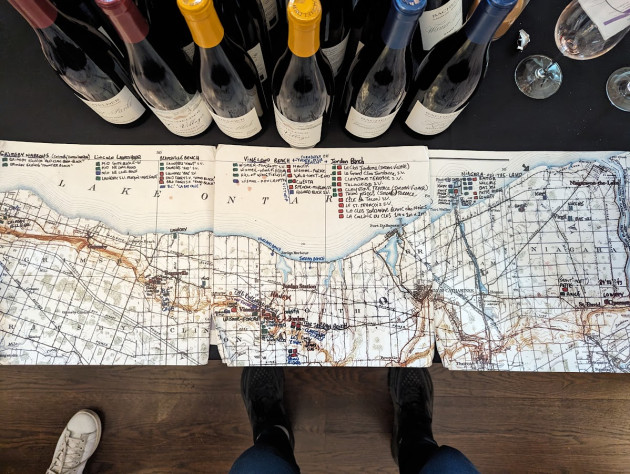
Taste Canada 2024: Beyond Icewine
Canada continued to make its case for a growing number of styles this week, including an assortment of sparkling and still wine from British Columbia, Ontario and Nova Scotia, proving that it is far more than its most famous export.
Taste Canada arrived for its tenth outing on Tuesday (14 May) at its usual spot at Canada House in Trafalgar Square, where producers looked to showcase the breadth of styles from across its regions, which are primarily located between 41° and 50° North, similar roughly to northern France.
Core, widely planted varieties still centre around Chardonnay, Riesling, Cabernet Franc and Pinot Noir, while still and sparkling wines are also made from lesser planted varieties such as Syrah, Gamay and Chenin Blanc. Hybrid L’Acadie Blanc, which is widely grown in Nova Scotia, is used in still and sparkling wine.
As Janet Dorozynski, trade commissioner and sector lead for Canadian wine, beer and spirits, explained to Harpers, Icewine represents a mere 5% of production at most, with the majority hailing from Ontario and made from Vidal, Riesling and Cabernet Franc.
Yet for many years it has continued to steal the limelight from the widely produced and more market-friendly styles which are now emerging.
“We don’t make inexpensive wines,” Dorozynski explained. “Production costs are high and economies of scale are not the same as other New World countries we’re compared to – and our flavour profile is not necessarily the same.
“While Canada grows more than 120 different grape varieties, over the past 10 or 20 years, Canadian wineries have started to hone in on several varieties that are extremely well suited to Canada’s continental climate with a cool climate sensibility. Many Canadian wines show a purity of fruit with lively balanced acidity that make them food friendly and in line with the growing trend toward lighter styles of wine. Some people don’t even know we do table wine. They tend to think Icewine is the majority of production, but it’s not and never has been. We won a prize at Vinexpo back in 1991, which put Icewine on the map. But ice wine is very special and hard to make.”
Despite Icewine’s high profile, table wine now accounts for the vast majority of production, with fizz and Icewine filling in the gaps at approximately 10% and 4% respectively.
Increasingly, components used in Canada’s Icewine production are being repurposed for other styles. For example, French vitis vinifera hybrid Vidal is planted across Canada and is a primary grape used for making Icewine. But it’s also forming the basis for interesting styles such as orange wine, which makes use of the grape’s aromatic intensity and thick skins.
Sparkling is also quickly growing. Traditional method fizz is now one of the styles that unites Canada across its regions – a title that once historically went to just Icewine.
Several of these food-friendly sparklers were on show at Tuesday’s masterclass double bill. Led by Dorozynski and Dr Jamie Goode, the wines included Benjamin Bridge Winery Brut Rose 2019, Gaspereau Valley (10.5% abv) and Blomidon Estate Winery, Cuvée L’Acadie NV, Annapolis Valley (11.5% abv), both from Nova Scotia. Lightfoot & Wolfville Vineyards, Brut 2016, Gaspereau Valley (12% abv) also provided great examples of how coastal breezes create Nova Scotia’s characteristic minerality.
“Since I first started visiting Canada in 2013, there has been a marked improvement in the wines, and this was shown at the Canada House tasting,” Goode said.
“Nova Scotia shone with its sparkling wines and some cool-climate still wines; Niagara demonstrated its aptitude for Riesling, Chardonnay, Cabernet Franc, Pinot Noir and Gamay; and the Okanagan demonstrated its aptitude for Syrah, Bordeaux-style blends, Pinot Gris and Pinot Noir, among others. It’s an exciting time for Canadian wine, despite the occasional challenges of very cold winters, and it will be interesting to see these wines make further progress in the UK market.”
Ralph Goodale, high commissioner for Canada in the UK, added: “Taste Canada London 2024 brought together 25 wineries from British Columbia, Nova Scotia and Ontario and the fact that we had 200 industry representatives, importers, restaurants, and many more attend, is testament to the growing strength of Canadian wines in the UK market. We are already making plans for next year’s event to be bigger and better as we will jointly celebrate the 100th anniversary of Canada House”.









